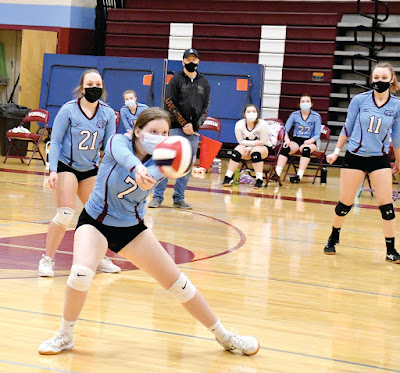 By
Bob Chapin
By
Bob Chapin
For
an interesting and exciting day on the water when the weather is cooperative,
nothing beats a deep-sea fishing adventure. Mainers have several choices
available to them as we have a robust commercial charter fishing fleet within
easy access. Most ‘Head Boat’ fishing, as it is often referred to, is for
saltwater species. The attraction for anglers is that it gets you in position
to catch species that you normally can’t fish for because it takes a large boat
to safely transport you and an intimate knowledge of where the fish are.
The
old adage that ’90 percent of the fish are in 20 percent of the water’ is never
truer than when you venture offshore. Knowing what is running and where is
three quarters of the battle and charter Captains generally know their stuff.
They also know what is currently legal in terms of fish species, minimum
lengths, and bag limits so they keep their customers legal, or they don’t stay
in business very long.
A
charter differs from a head boat in that there is usually one payee who covers
the charter or 3-4 guys chipping in versus many fishermen paying a flat head
fee per person for the days fishing. The size of your pocketbook usually
determines what path you take.
I
have done individual charters in Sebago Lake and head boat charters out of
Perkins Cove in Ogunquit and both were productive and enjoyable. Most of my
head boating was done in Chesapeake Bay for strippers and bluefish with an
added bonus of ground fish such as Croakers but I have also done head boats out
of Florida, California, Thailand, and Korea. The boats ranged in size and
accommodated anywhere from 6 to 66 anglers, but procedurally they are very
similar.
 I
can’t speak to the charters out of Portland harbor, because I have never done
one, but I have done several out of Ogunquit and I suspect they too are very
similar. Each captain runs his boat a little differently, but this is what you
can expect on the Bunny Clark, owned by Tim Tower out of Perkins Cove:
I
can’t speak to the charters out of Portland harbor, because I have never done
one, but I have done several out of Ogunquit and I suspect they too are very
similar. Each captain runs his boat a little differently, but this is what you
can expect on the Bunny Clark, owned by Tim Tower out of Perkins Cove:
Between
6 and 7 a.m. fishermen check in at the boat and pay any outstanding fees
including parking for their vehicle while they fish.
At 7
a.m. the captain gives the safety briefing, covers any expected weather, how
long it is likely to be before they begin fishing, and invites you to
participate in a $5 pool for biggest fish.
At
7:30 a.m. the boat leaves the dock. Late fishermen can expect to be left
behind, whatever the reason. The boat heads out into the Atlantic for the next
1 1/2 to 2 1/2 hours depending on how far out on Jefferies Ledge the captain
feels he must go to get to good fishing.
Between
9 and 10:30 a.m. you arrive at “the spot” the boat meanders a bit as the
captain chases a set of GPS coordinates confirmed by his sonar fish finder. The
anchor goes out or you begin a drift that might last for an hour or more
depending upon the bite. The mate will come around and equip you with a rod,
reel, terminal tackle either a fly, a 16-ounce metal jig, or a hook, and bait.
At
the 10:30 a.m. captain’s signal, you all drop your offerings into 120 to 320
feet of water. Much of your fishing time will be spent cranking your line up
from the bottom or letting it back down. You can use your own tackle, but your
terminal tackle should be close to the weight everyone else is using, if not
tangles will soon develop. The captain will tolerate that once, maybe twice,
then he will cut your gear off and replace it with his. There is no charge for
using his terminal gear but if you lose it, you will owe him $16.
The
First Mate will mark your fish as it goes into a central ice box and you will
get it back all filleted at the dock for ~$1/fish.
Between
1 and 3 p.m., the captain will announce you are heading back to the dock. Now
you can eat your lunch, read a book, converse with other fishermen, or sleep.
Some
of the enjoyment of these trips is in the sightseeing. Seabirds are almost
always around you, and you may see tuna, porpoises, whales, whale sharks,
lobstermen and commercial shipping.
What
you are likely to catch: These are all ground fish or bottom feeders, but don’t
let that put you off, they all taste great. Cod is under a moratorium at this
time so even though you may catch one, it goes back. Expect Hake, Pollock,
Halibut (yes, we have some here), some Red Snapper, and Cusk or Burbot. <














